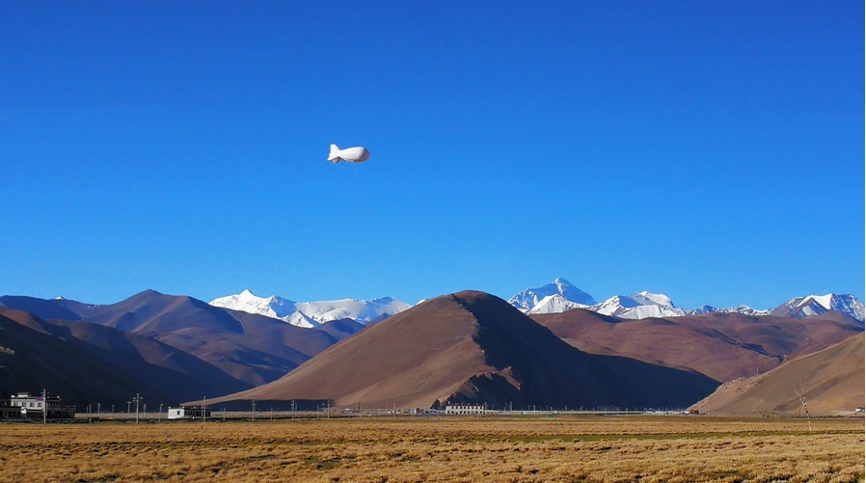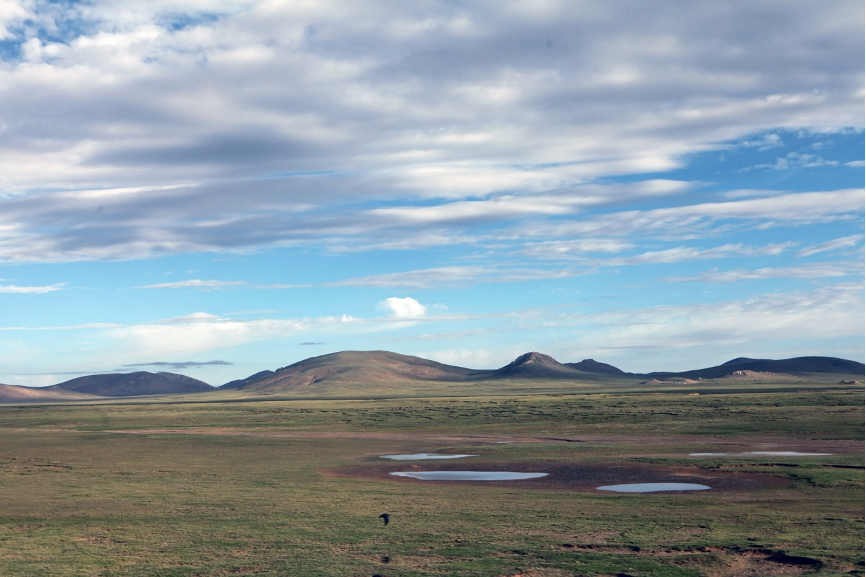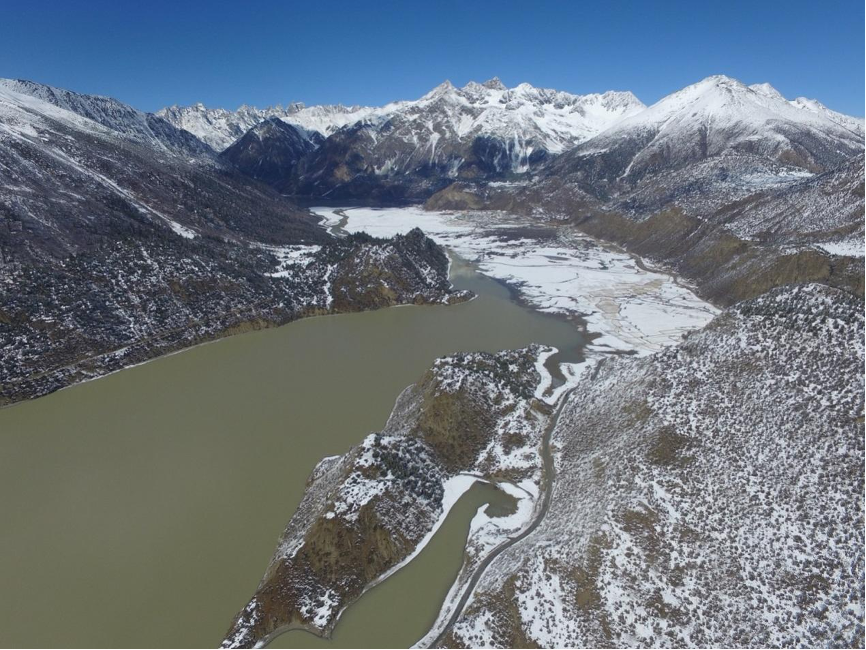China's Tibet reaps fruitful results in glacier protection

"Jimu-1" No. 3 airship platform flies over Mount Qomolangma during China's second scientific research survey on the Qinghai-Tibet Plateau. The airship is equipped with multiple scientific devices. [Photo courtesy of the Institute of Tibetan Plateau Research, Chinese Academy of Sciences]
Mount Qomolangma, also known as Mount Everest in the West, is the world's highest peak and one of the most famous snow-capped mountains. Thanks to enhanced efforts of ecological protection, Mount Qomolangma and its surrounding areas have seen better environmental conditions in recent years.
Recently, preliminary results were published on China's second scientific research survey on the Qinghai-Tibet Plateau launched in May this year. According to the scientific research team, glaciers distributed on the plateau and surrounding mountains cover about 100,000 square kilometers, and snowfields about 300,000 square kilometers. The ice reserves in the area amounted to about 8,850 cubic kilometers, equivalent to about 8 trillion cubic meters of water.
Glaciers and snowfields are a vital part of the ecology on the Qinghai-Tibet Plateau. As a source or many rivers, they nurture the river system on the plateau and have a profound impact on the surrounding ecology.

Photo shows the Changtang Grassland located in the hinterland of Nagchu, southwest China's Tibet autonomous region. The grassland has an average altitude of over 4,500 meters. [Photo by You Bing/People's Daily Online]
Yao Tandong, leader of the scientific research team and academician of the Chinese Academy of Sciences, told People's Daily that the total coverage of six lakes on the Qinghai-Tibet Plateau expanded by 20.2 percent between 1976 and 2010, including the Siling Lake and the Namtso. In particular, lakes replenished by glaciers saw a more obvious increase in water levels than those that are not replenished by glaciers.
He noted that the Siling Lake, once the second largest lake in China’s Tibet autonomous region, has now replaced the Namtso as the largest one.
Scientific researchers found the vegetation coverage in the Qomolangma National Nature Reserve has been on the rise, especially since 2010. The improvement in core zones and buffer zones is higher than that in experimental zones and peripheral areas, they said.
Global warming is a major reason causing the melting of glaciers, but human activities also contribute to such a phenomenon. Therefore, it's not enough to only reduce the emission of greenhouse gases. Human activities must be curbed in glacier areas, too.
The Purog Kangri glaciers in the Changtang National Nature Reserve, at 6,000-6,800 meters above sea level, cover an area of more than 400 square kilometers. It is the world's largest glacier in low- and mid-latitude regions. Since 2018, the Changtang National Nature Reserve has suspended all tourism services, and as a result, grasslands near the glaciers are gradually recovering.
In addition, mountain climbing is also put under strict control in Tibet. According to a statement jointly released by the General Administration of Sport and the sports bureau of Tibet, climbers targeting peaks above 5,000 meters in Tibet autonomous region now have to apply for a permit at least a month in advance of their planned ascent.

Photo shows the Laigu Glaciers in Baxoi county, Qamdo, southwest China's Tibet autonomous region. [Photo by Shui Xiaojie/People's Daily Online]
Climbers are also being asked to abide by related laws and regulations to protect mountain environments. Organizers or climbers participating in illegal climbing will face administrative penalties, the statement said.
Technologies are contributing to the protection of glaciers, too. In 2020, a 30-meter-tall monitoring tower was erected on the KoKhyung Gangri glaciers in the northern part of Lhasa, the capital of Tibet autonomous region. The monitoring will reveal the features and mechanisms of glaciers' changes under different climates, and how meltwater runoff replenishes and contributes to the runoff from mountainous watersheds.
This time, the scientific research team established an automatic meteorological monitoring station and other monitoring devices near the monitoring tower.
Thanks to constant technological progress, scientists nowadays are able to carry out disaster warnings in a more efficient manner, thus better protecting the Qinghai-Tibet Plateau.
























